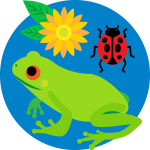Lifelong Naturalist
Theodore Roosevelt had a strong connection with the American Museum of Natural History.
His father, Theodore Roosevelt, Sr., was one of the Museum’s founders. Growing up, young Teddy visited the Museum often. He even explored the collections behind the scenes.
Throughout his life, Roosevelt donated many items to the Museum, including a passenger pigeon, a necklace made by a native tribe in Brazil, and the skin of an extinct giant sloth. Some of these specimens are still on display today.
In 1936, the Museum opened the Theodore Roosevelt Memorial Hall in his honor. It features quotes, murals, and dioramas of places that were special to Roosevelt.




 Biodiversity
Biodiversity
 Brain
Brain
 Genetics
Genetics
 Marine BiOLogy
Marine BiOLogy
 MicrobiOLogy
MicrobiOLogy
 PaleontOLogy
PaleontOLogy
 ZoOLogy
ZoOLogy
 AnthropOLogy
AnthropOLogy
 ArchaeOLogy
ArchaeOLogy
 Astronomy
Astronomy
 Climate Change
Climate Change
 Earth
Earth
 Physics
Physics
 Water
Water
